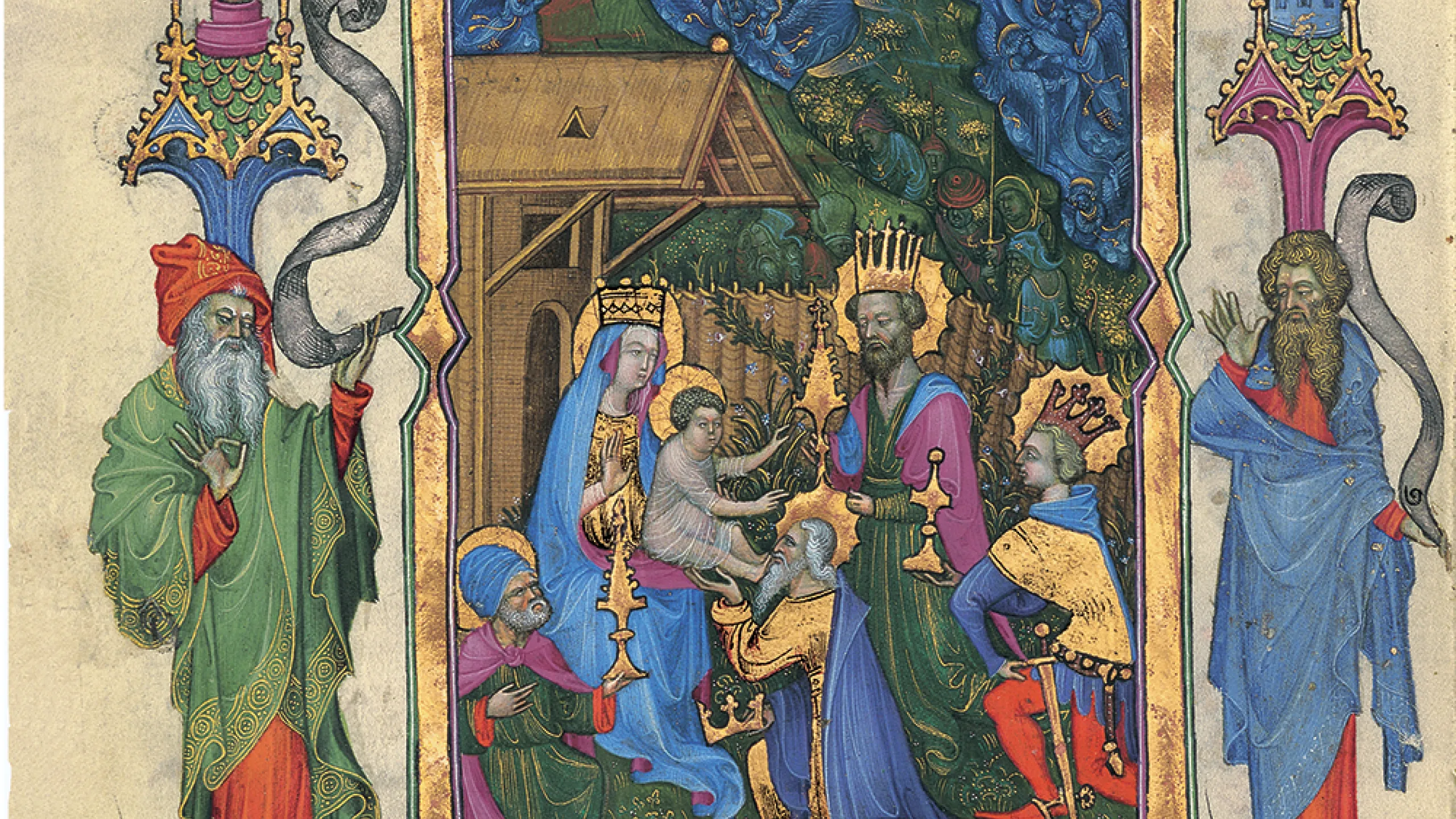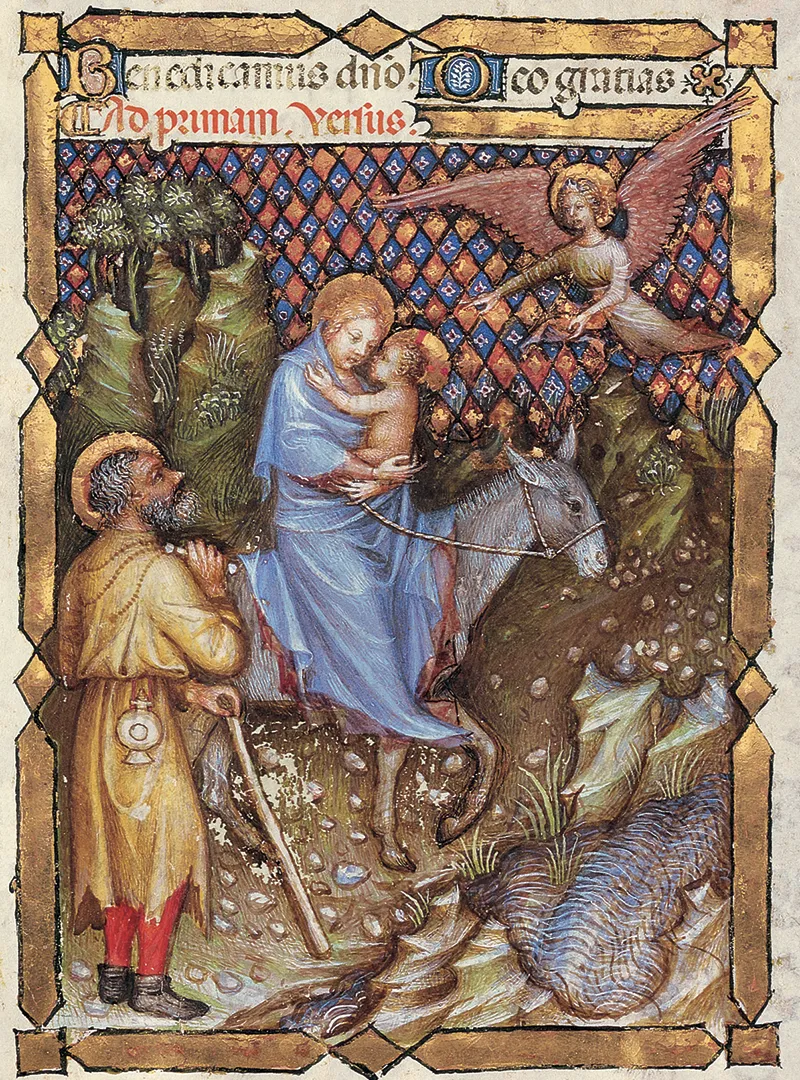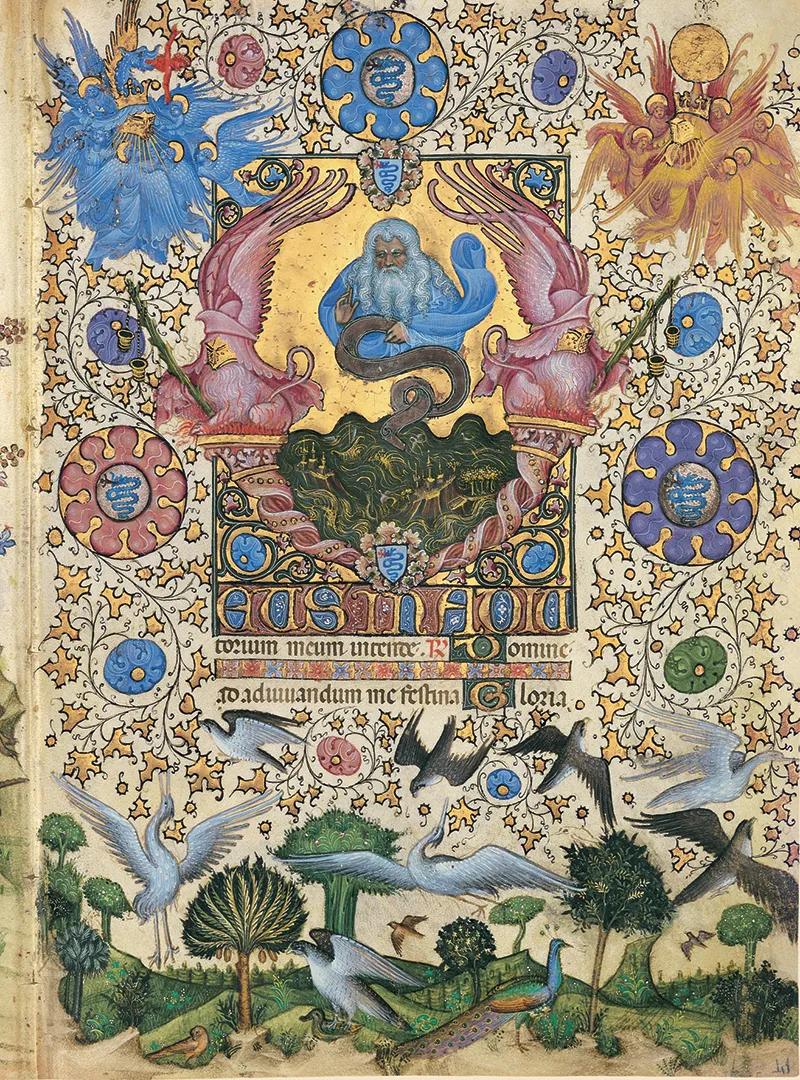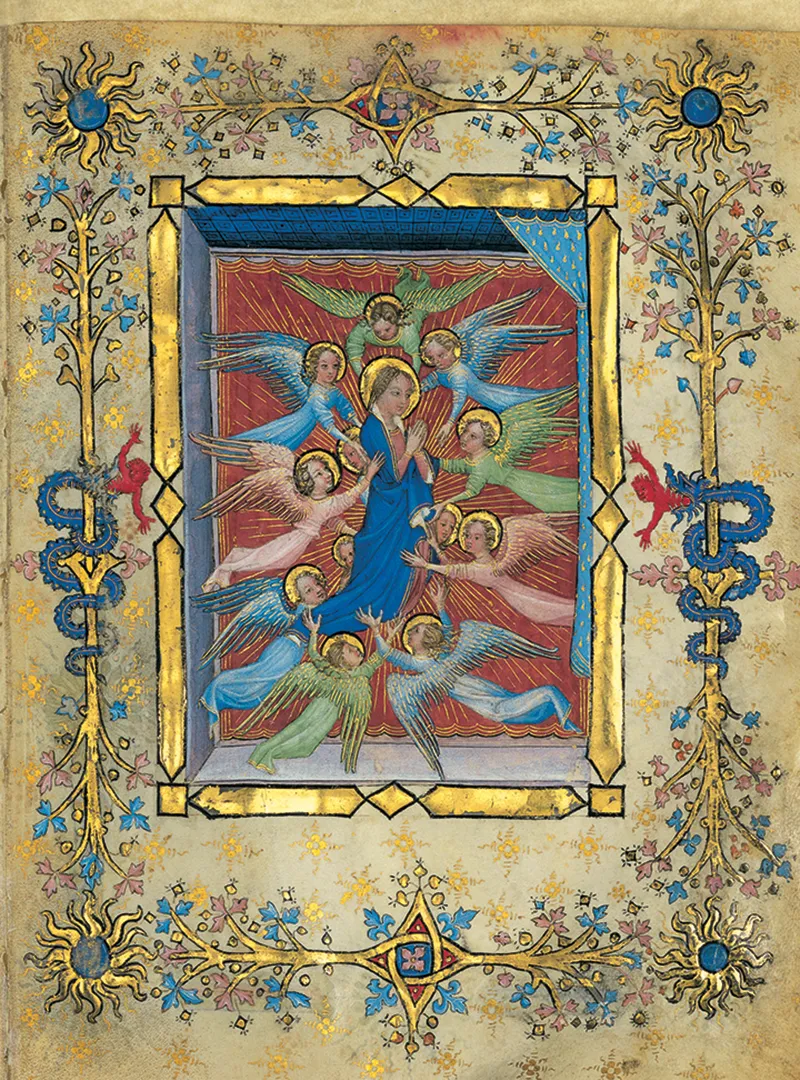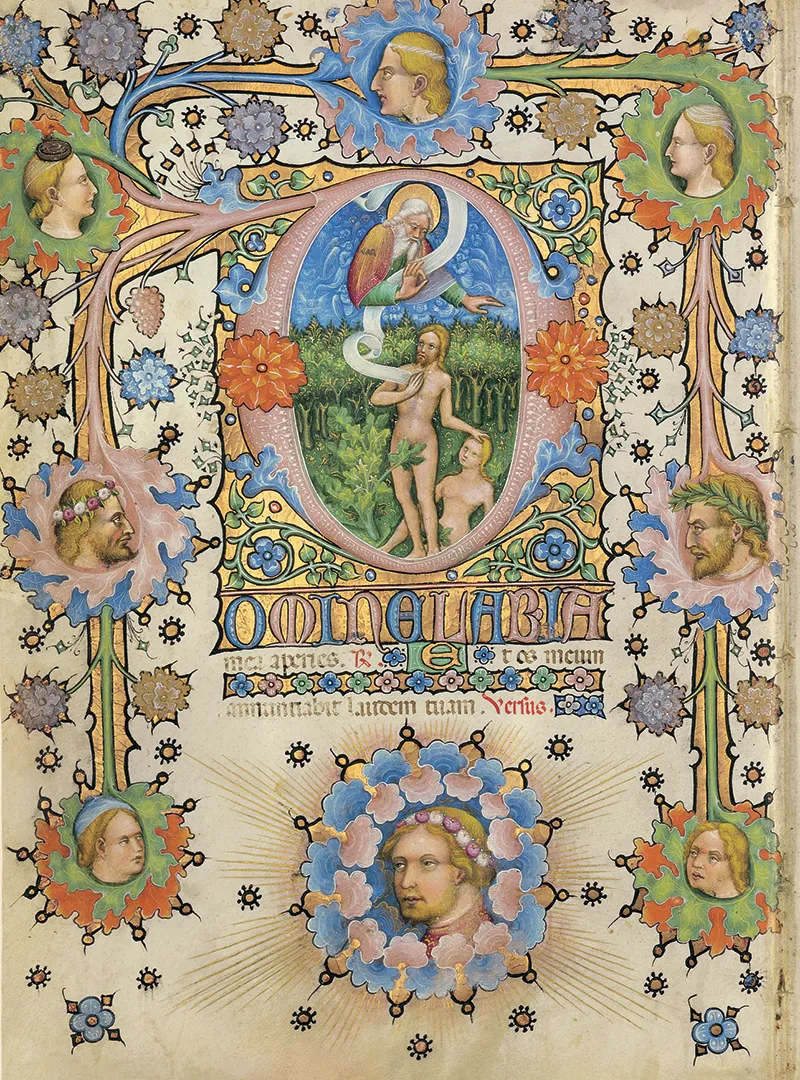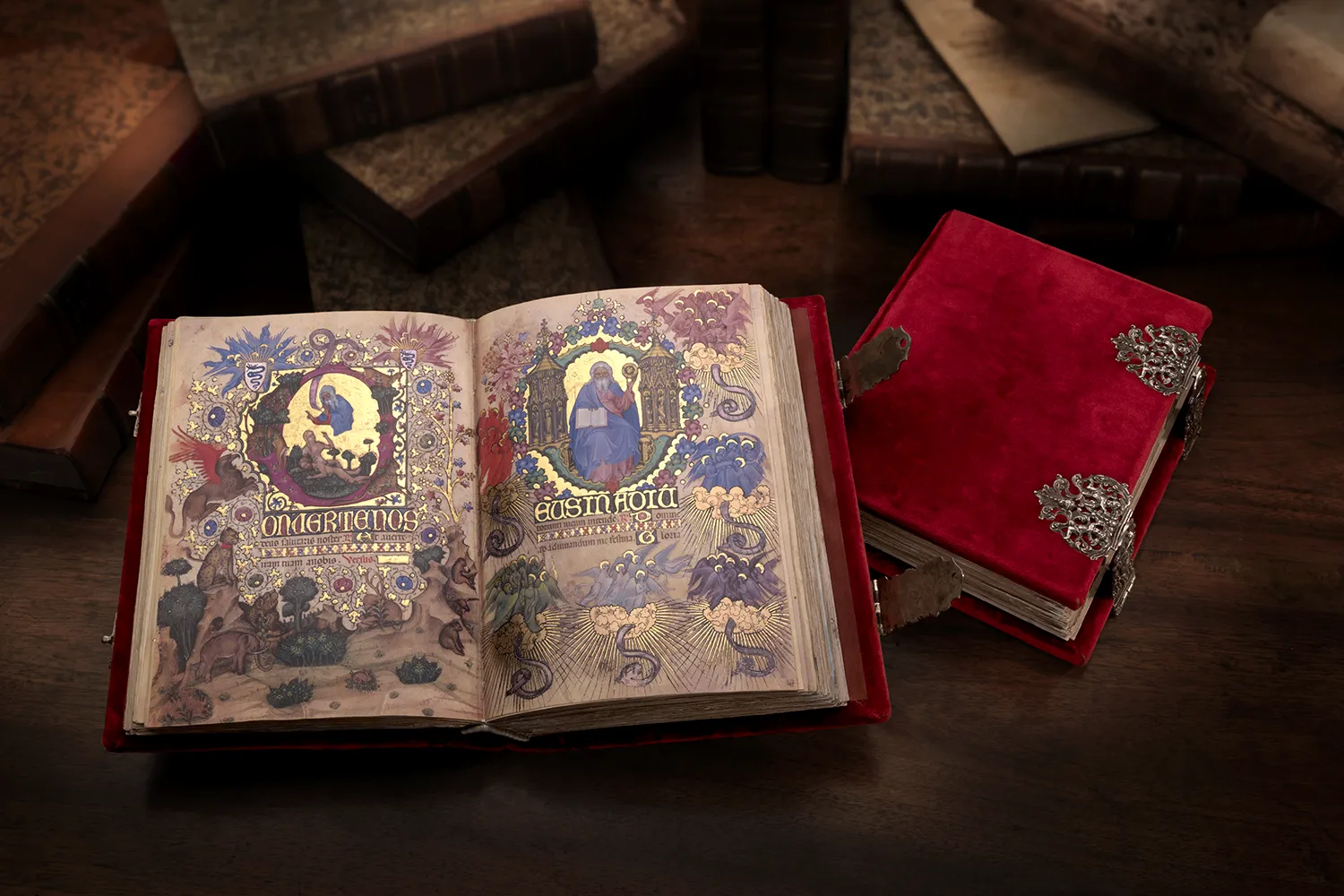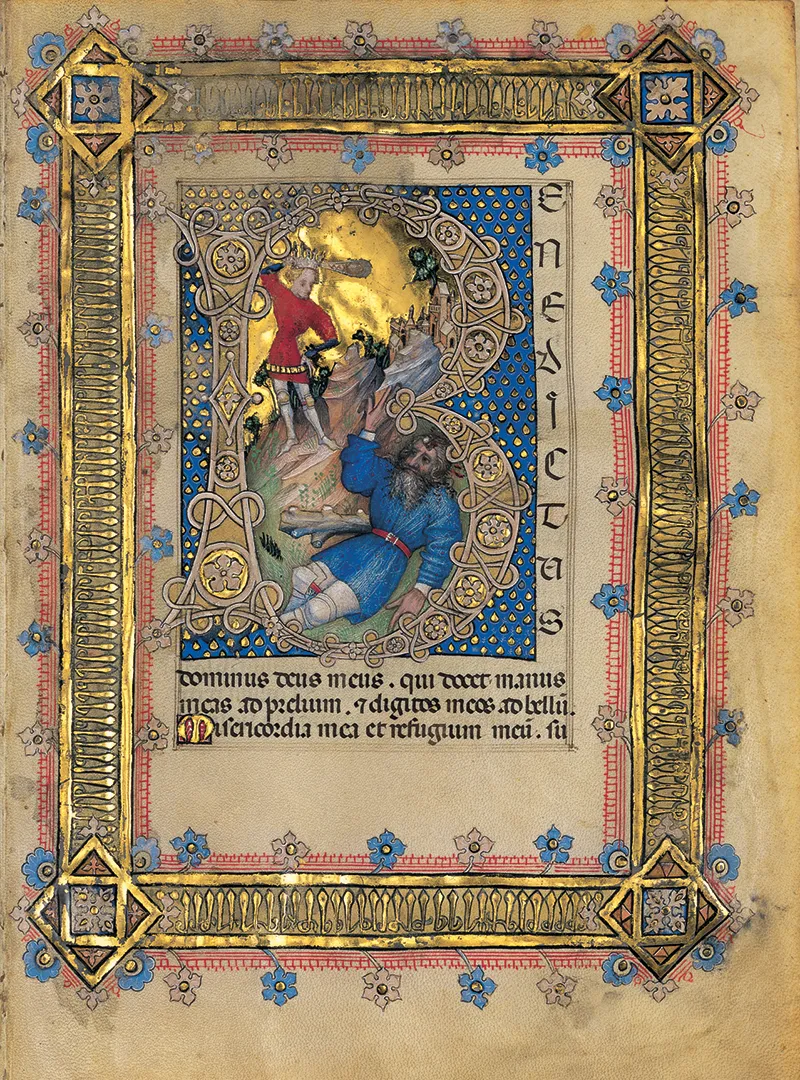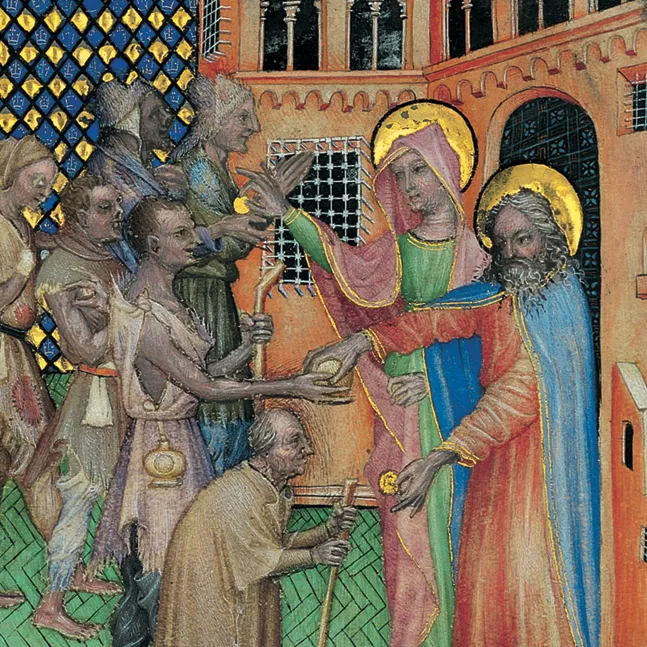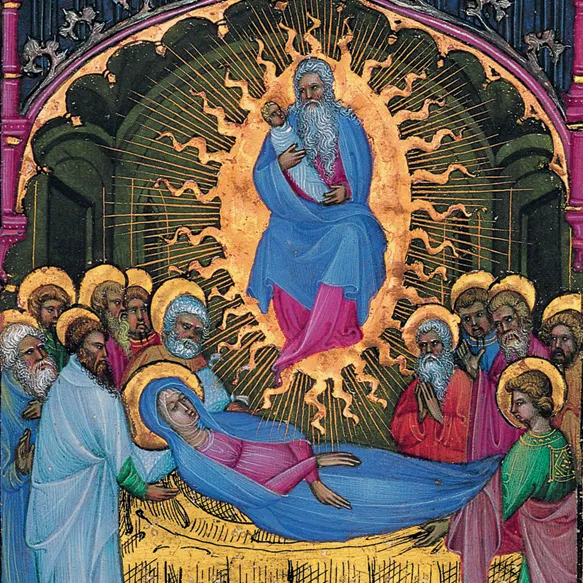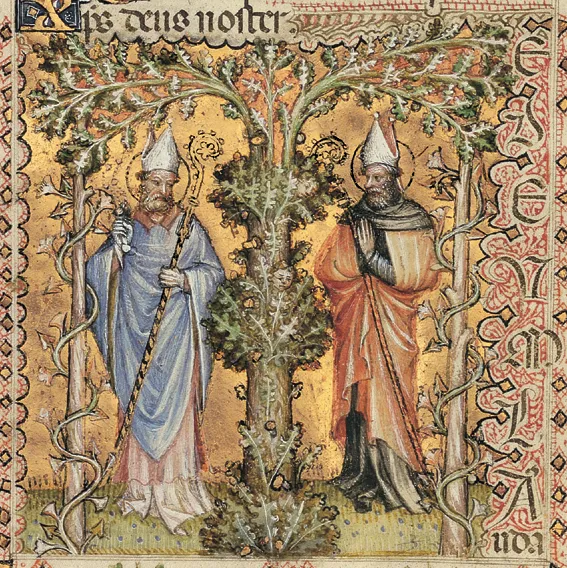Un Libro d’Ore eccezionalmente ricco, in due volumi, le cui miniature furono eseguite in differenti epoche da due artisti molto diversi fra loro. Giovannino de’ Grassi, pittore della Fabbrica del Duomo, dipinse con alcuni collaboratori le prime pagine per Giangaleazzo Visconti, signore di Milano; questo lavoro fu interrotto dalla morte del Duca nel 1402 e fu più tardi ripreso da Belbello da Pavia per il figlio di Giangaleazzo, Filippo Maria, quando questi divenne duca nel 1412.
L’edizione in facsimile.
Prima della campagna fotografica, il manoscritto è stato smontato per consentire la verifica dello stato di conservazione ed operare alcuni restauri.
Alla riproduzione fotografica sono seguite la scomposizione del colore e degli ori; le prove cromatiche sono state confrontate dai tecnici con l’originale con meticolosa attenzione, pagina per pagina.
La stampa presenta un particolare retino a grana finissima, gli ori sono stati riprodotti con lamina a caldo e i fogli fustellati singolarmente per ricreare i bordi esterni delle pagine dell’originale.
Legatura.
La legatura è stata realizzata a mano artigianalmente, con una copertina in pannelli di legno ricoperti in velluto di seta, risguardi in raso moerro e cerniere interne in pelle. I fermagli sono in argento ottenuto con fusione a cera persa.
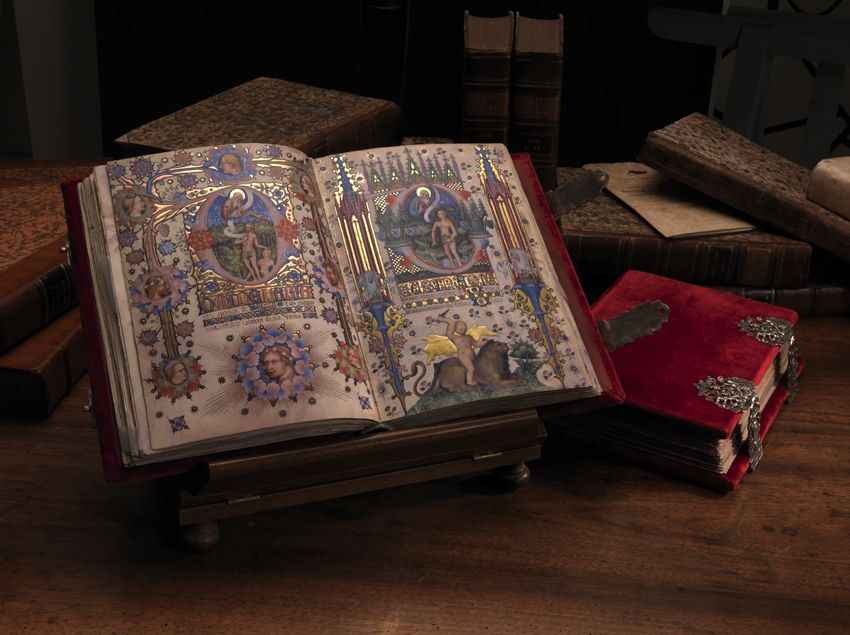
Caratteristiche dell’opera.
Riproduzione integrale dei codici BR 397 e LF 22 per concessione della Biblioteca Nazionale Centrale di Firenze e del Comune di Firenze.
- Due tomi di formato 20 x 27 x 6 cm ciascuno, per complessive 636 pagine
- Tiratura limitata di 500 copie numerate
- Stampa su carte pregiate con speciale retino stocastico che garantisce la massima fedeltà cromatica
- Riproduzione di oro e argento in lamina con trancia a caldo, successivo trattamento di invecchiamento e rilievo della lamina
- Riproduzione di speciali decorazioni (oro in pasta, punzonature, laccature, satinature, ecc.)
- Fustellatura a pagina singola
- Legatura realizzata a mano con cucitura a mano dei fascicoli e del capitello
- Copertine in legno rivestite di velluto di seta, fermagli e bindelle in argento massiccio
- I due tomi sono presentati in un elegante cofanetto in legno laccato nero con lo stemma visconteo in argento smaltato e l’interno in raso di seta
- Il codice è accompagnato da un volume di commentario, a cura di Milvia Bollati, e da un volume di Schede descrittive, a cura di Adriana Di Domenico.
Il committente
Gian Galeazzo Visconti.

Raffinato mecenate del Rinascimento.
Giangaleazzo Visconti fu il più ambizioso e probabilmente il più intelligente membro della potente famiglia dei Visconti, che governarono Milano per più di un secolo. Nato nel 1351, sposò Isabella, figlia di re Giovanni di Francia, e la loro figlia Valentina andò in sposa a Luigi d’Orléans, il figlio minore di re Carlo VI di Francia.
Fu un mecenate della cultura e dell’arte. Negli ultimi anni del secolo fece di Pavia e Milano due tra i maggiori centri europei per la produzione di codici miniati.
La biblioteca impossibile.
Il Libro d’Ore Visconti fa parte della collana “La Biblioteca Impossibile”, la più autorevole e preziosa collezione di facsimili dedicata al Rinascimento. Un progetto unico per completezza e rigore scientifico inaugurato nel 1995 dalla Bibbia di Borso d’Este e proseguito, anno dopo anno, con la riproduzione di capolavori assoluti della miniatura: dalla monumentale Bibbia di Federico da Montefeltro al piccolo Libro d’Ore Torriani, dal sontuoso Lezionario Farnese alle celeberrime Très Riches Heures del Duca di Berry.
Contattaci.
Questo titolo non è più disponibile. Per richiedere ulteriori informazioni o se interessati all’acquisto dei titoli della Biblioteca Impossibile ancora disponibili, vi invitiamo a contattarci tramite il modulo sottostante.
